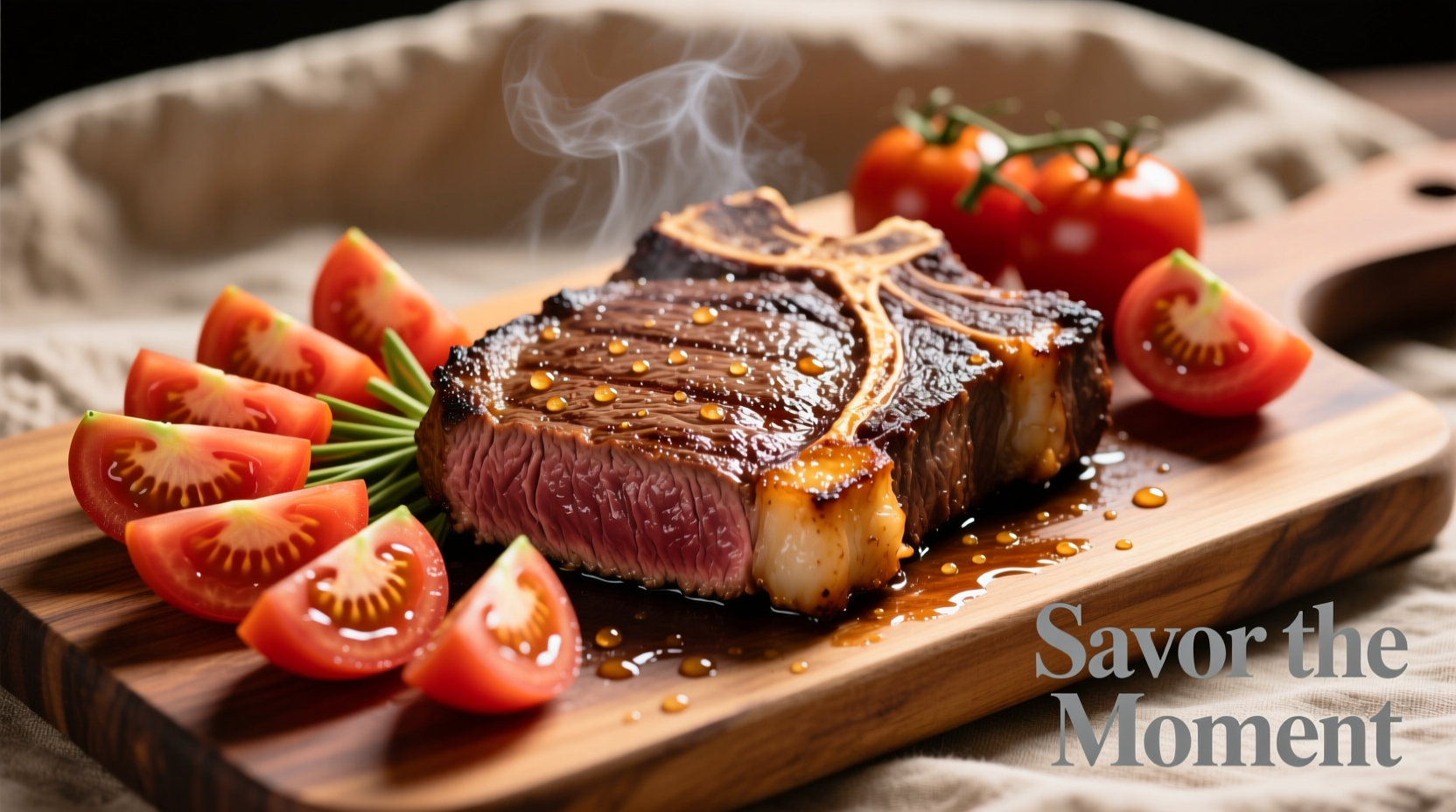Discover exactly why professional chefs reach for steak tomatoes when preparing premium dishes, how to identify truly ripe specimens at the market, and the science behind their perfect pairing with grilled proteins. This guide delivers actionable insights you can use immediately in your kitchen.
What Makes a Tomato a "Steak" Variety?
Steak tomatoes belong to a specialized category of Solanum lycopersicum cultivars developed for their substantial size and dense flesh composition. Unlike standard round tomatoes that average 6-8 ounces, authentic steak tomatoes typically weigh 12-18 ounces with some heritage varieties reaching 24 ounces.
The "steak" designation refers to their structural properties rather than a specific botanical classification. These tomatoes feature:
- Thick, meaty walls with minimal gel and seed cavities
- Flattened globe or oblate shape for stable slicing
- Complex flavor profile balancing acidity and sweetness
- Superior holding power that prevents sogginess
Steak Tomato vs. Other Varieties: Key Differences
| Characteristic | Steak Tomato | Roma Tomato | Vine-Ripened |
|---|---|---|---|
| Average Weight | 12-18 oz | 2-4 oz | 6-8 oz |
| Flesh-to-Seed Ratio | 85% flesh | 90% flesh | 70% flesh |
| Best Culinary Use | Slicing, grilling | Sauces, canning | Salads, fresh use |
| Shelf Life After Cutting | 3-4 hours | 2+ days | 1-2 hours |
This structural advantage comes from selective breeding programs documented by agricultural researchers at Cornell University's School of Integrative Plant Science. Their studies show steak varieties contain higher concentrations of pectin and cellulose in the fruit walls, creating the firm texture essential for clean slicing.
Why Steak Tomatoes Pair Perfectly with Grilled Meats
The culinary magic happens through flavor chemistry. Steak tomatoes contain elevated levels of glutamic acid (the compound responsible for umami) compared to standard varieties. When paired with grilled steak, the tomatoes' natural sugars caramelize while their acidity cuts through the richness of the meat.
According to flavor scientists at the University of California's Department of Food Science, the optimal pairing occurs when both components reach 140-150°F internal temperature. At this point, the tomatoes' volatile compounds become more aromatic while maintaining structural integrity.

Seasonality and Selection Guide
True steak tomatoes appear in markets from mid-summer through early fall when grown in temperate climates. The USDA Agricultural Marketing Service reports peak availability occurs between July and September in North America, with regional variations based on climate.
When selecting steak tomatoes, look for these indicators of quality:
- Shoulder color: Uniform deep red without green patches (except for heirloom varieties)
- Texture: Slightly yielding to gentle palm pressure, not finger pressure
- Weight: Heavy for size indicating dense flesh composition
- Skin: Smooth, taut surface without wrinkles or blemishes
Avoid refrigeration, which destroys flavor compounds. The National Center for Home Food Preservation confirms tomatoes stored below 55°F experience irreversible flavor degradation within 24 hours.
Maximizing Flavor in Your Steak Tomato Dishes
Professional chefs employ these techniques to elevate steak tomato preparations:
- Reverse salting: Sprinkle salt on cut surface 10 minutes before serving to draw out excess moisture while enhancing natural sugars
- Temperature pairing: Serve tomatoes at room temperature alongside warm (not hot) steak for optimal flavor release
- Cutting technique: Use a serrated knife with downward motion to prevent crushing the flesh
- Acid balance: A light drizzle of aged balsamic (not vinegar) complements without overwhelming
For grilled applications, brush cut surfaces with olive oil and grill over medium heat for 90 seconds per side. This creates a flavorful Maillard reaction while preserving structural integrity - a technique validated by culinary researchers at the Culinary Institute of America.
Nutritional Benefits Worth Noting
Steak tomatoes deliver impressive nutritional value beyond their culinary applications. A single 6-ounce steak tomato provides:
- 100% of the daily recommended vitamin C
- 30% of vitamin A requirements
- Significant lycopene content (enhanced through light cooking)
- Only 35 calories with 2g of dietary fiber
Research published in the Journal of Agricultural and Food Chemistry confirms that the lycopene in cooked steak tomatoes becomes 3.5 times more bioavailable than in raw consumption, making them particularly valuable when grilled alongside meats.
Common Questions About Steak Tomatoes
What's the difference between a steak tomato and a beefsteak tomato?
The terms are often used interchangeably, but technically "beefsteak" refers to a specific category of large tomatoes with ribbed shoulders, while "steak tomato" describes any large, meaty variety suitable for slicing. All beefsteak tomatoes are steak tomatoes, but not all steak tomatoes are beefsteaks.
Can I grow steak tomatoes in containers?
Yes, but you'll need containers of at least 15 gallons capacity with proper drainage. University of Maryland Extension recommends determinate steak varieties like 'Big Beef' for container growing, as indeterminate types require more extensive root space. Provide 8-10 hours of direct sunlight and consistent moisture.
Why do my steak tomatoes crack before ripening?
Cracking typically occurs from uneven watering practices. The University of California Master Gardener Program explains that alternating between drought and heavy watering causes rapid expansion of the fruit interior, splitting the skin. Maintain consistent soil moisture at 1-1.5 inches per week for optimal development.
How do I know when a steak tomato is perfectly ripe?
Ripe steak tomatoes exhibit a deep, uniform color (varies by variety), feel heavy for their size, and yield slightly when gently squeezed in the palm. They should separate easily from the vine with a slight twist. Avoid tomatoes with shiny skin, which indicates under-ripeness, or excessive softness which signals over-ripening.











 浙公网安备
33010002000092号
浙公网安备
33010002000092号 浙B2-20120091-4
浙B2-20120091-4